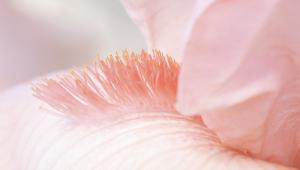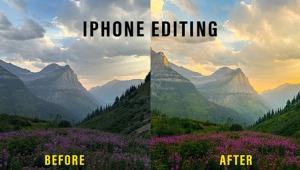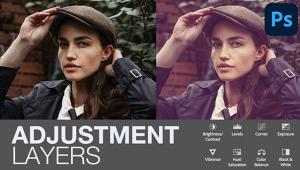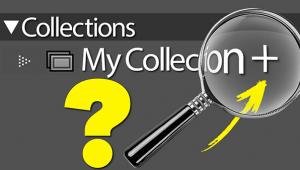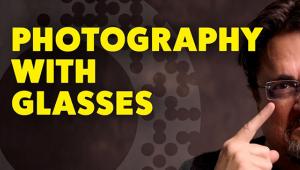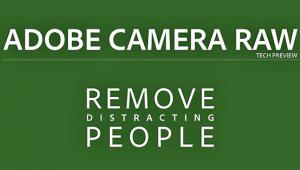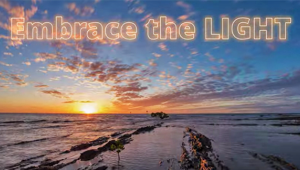Here’s Your Chance to Ask a Pro Your Tricky Photography Questions: Scott Kelby Q&A

Q. I recently purchased a Sony A7R II and have enjoyed the switch to Sony ever since. That said, I have discovered an “issue” with certain aspects of a mirrorless setup. There are times I would like to take shots of a subject at night using a flash. The problem arises when using the EVF to compose with settings that work for the exposure with flash. It is nearly impossible to see anything, as the EVF is just black! I am sure this is not just a problem with Sony EVFs, but other mirrorless cameras as well. Is there a button that you can map, similar to the Nikon “Preview” function? Something that will “light” the EVF so you can see what you have within your frame while composing would be perfect, but I do not recognize the function name within the menus if there is one. Is this just an inherent “problem” with mirrorless cameras with EVFs for now?
A. You’re in luck because there is such a built-in feature for situations like this. I ran into a similar situation while testing an A7R II in the studio: I couldn’t see my subject in the darkened studio using strobes. What you’ll need to do is turn off the Live View Display setting, so it works more like an optical viewfinder. Go to the Gear icon, then under Live View Display, where it says “Setting Effect ON/OFF,” set it to “OFF.” Now you’ll be able to see your subject at night before the flash fires, so you can compose your image, make sure you’re focused, etc.
Q. I’m shooting in Raw on my Canon EOS 6D. I like my greens and blues very vivid so I use the Landscape Picture Style. The photos look great when I view them on the LCD. However, when I import my images into Lightroom they look much flatter and duller, and I fear that it’s not picking up the Picture Style I’ve chosen. Is there a way I can make it honor my Picture Style choice?
A. Since you’re shooting in Raw, Lightroom ignores your Picture Style choice in camera—it only honors the choice for images taken in JPEG mode—but you’re not out of luck. Go to Lightroom’s Develop module, then scroll down to the Camera Calibration panel. Where it says “Profile” you’ll see a pop-up menu to the right. Click and hold on that pop-up menu and you’ll see the Picture Styles you could have applied in camera as choices in this menu. In your case, choose “Landscape” from this pop-up menu and you’ll see those vivid colors and contrast come back.
Q. I recently bought a Datacolor Spyder5PRO and with the bundle came SpyderLENSCAL. How critical is the calibration of lenses when the images look good? Are the results worth the time and trouble? Is the change in focus that great to really affect the image outcome? Would you recommend making an effort to do it for all my lenses? I have a Canon EOS 7D Mark II and am very satisfied with the images from my 18-135mm lenses.
A. Although I haven’t used the Datacolor SpyderLENSCAL, I have tried other lens calibrators and they can work if—and this is a big if—your lens has a visible focus problem. For example, if you’re looking at images from what was once a sharp lens and now they don’t look nearly as sharp. In your case, it sounds like there isn’t any type of focus issue, so I doubt you would see any noticeable difference in sharpness after going through the calibration process. If one day you do notice a degrading focus from your 18-135mm lens, the good news is you have a package that possibly could fix it. I say “could” because lens softness issues aren’t always just calibration issues.
Q. Why do the camera manufacturers install an infrared blocking filter in their cameras?
A. Because without that blocking filter, the infrared (IR) light your camera’s sensor picks up, which isn’t visible to the naked eye, would contaminate the visible light being read by your sensor and mess up your regular color images. In short, your camera’s sensor would capture light we can’t see, so the colors in the resulting images wouldn’t look like what we’re used to seeing with our eyes. If you want to shoot IR, you could have your camera converted into an IR version, but then it will only shoot IR-style photos. A lot of photographers buy an older DSLR cheap (think eBay) and have it converted to an IR camera. There are companies that specialize in IR conversions, like lifepixel.com or kolarivision.com, and they’ll convert a camera you send them, or you can buy an already converted camera directly from them. That way, when you want to shoot IR, you grab your IR camera; for everything else, you grab your regular camera. I have an old Fuji that was converted to IR and it works like a charm.
Q. I am using a Nikon D750. I notice when the color red is in my shoots, it looks red with an orange tint. I have tried all of the white balance apparatus without success, and my monitors are calibrated. How can I fix this problem?
A. When I used to shoot Nikon I experienced the same thing; there was even a term for it—we used to say our Nikons “bloomed” in the reds. I believe it’s because Nikon sensors are very sensitive to the color red, which makes them awesome for landscape photography, but not as awesome for rendering skin tones in portraits—just my opinion. The way to get around that blooming in the reds (with the orange tint) is to underexpose the image by around a 1/2 stop. The blooming lessens and the reds look more correct. However, if you overexpose, those reds get really out of hand, so that’s what you might be experiencing. So, give the underexposing technique a try—you might even need to underexpose by a full stop if you’re shooting something like a robin or a rose. I really experienced my first serious bout of blooming when shooting a rose with Macro.
Scott Kelby is a photographer, Photoshop Guy, award-winning author of more than 50 books, and CEO of KelbyOne, an online education community dedicated to helping photographers take the kinds of images they’ve always dreamed of. You can learn more about Scott at his daily blog (scottkelby.com), or follow him on Twitter: @scottkelby.
Editor’s Note: Ask a Pro is a Q&A column from professional photographer, writer, and educator Scott Kelby. Scott is here to answer all your photography-related questions, so if you have something you’d like to know, e-mail him at editorial@shutterbug.com (with “For Scott Kelby” as the subject line) and your query could be featured in the next edition of Ask a Pro.






























